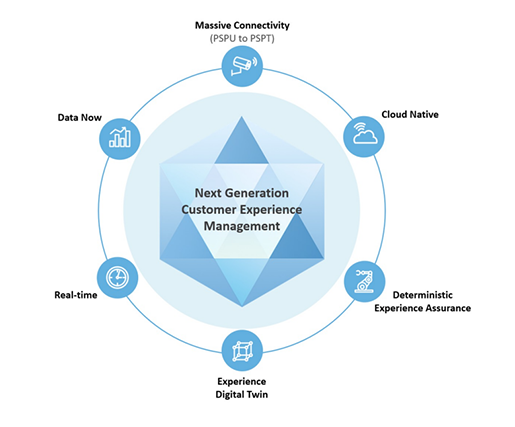Next Generation CEM, Now!
Customer Experience (CX) has become an increasingly important topic over recent years, particularly as consumers shift their spending from physical products to services and experiences. This trend is impacting all industries, and telecommunications is no exception. “Next Generation CEM, Now!”, a report recently published by TM Forum in collaboration with Huawei, aims to highlight the current CX trends impacting communications service providers (CSPs), and create an industry consensus on the future direction of customer experience management (CEM) development.
The demands which CX places on CSPs have changed considerably over the past 10 years, and this change has accelerated with the widescale rollout of 5G connectivity. This shift is being driven by changing customer expectations, both consumer and enterprise, as a result of the transformational experiences they now receive from digital native companies, as well as technology advances which are providing CSPs with the rich data and insights that can allow them to effectively differentiate based on CX.
“Next Generation CEM, Now!” looks at the recent evolution of the industry, revealing the key drivers of next generation CEM, and the fundamental role these need to play in CSP’s digital operation transformation. For any CSP seriously addressing CEM functions, incremental changes are no longer sufficient. Based on a survey of multiple CSP leaders, and with in-depth insight into the current CEM challenges facing CSPs, this report identifies six core characteristics that are driving next-generation CEM:
Massive Connections from Connected People and Connected Things: Users are no longer limited to people. This is a key trend that 5G is greatly accelerating. With the ongoing development of IoT and V2X services, “things” that access the network must also be considered users with experience requirements. This not only requires significant re-structuring of the corresponding data collection and CX indexing system, but also the experience evaluation model must consider many new aspects, from diverse device requirements to uniquely human experience needs such as level of immersion. In addition to on-demand and intelligent collection policy control, the data collection capability must meet the requirements of ultra-large connection requests (thousands of billions) and ultra-large traffic (PB-level concurrency).
Data Now: This refers to the end-to-end capabilities necessary to unlock the full value of data. Data Now includes all data that is collected by the organisation, and the processes required to make it useful. It might become information that is valuable, knowledge that can be learned, or intelligence that can support decision making. This requires not only fast data access and extreme data processing and computing, but also the ability to explore data and discover new actionable experience insights.
Real-time: Real-time is another emerging characteristic of next generation CEM. Traditional CEM systems already use statistical analysis-based perception to provide near real-time experience monitoring. However, in the 5G era, near real-time is not good enough. Instead, millisecond-level real-time experience monitoring and assurance is now required for many services, especially in 2B scenarios where remote precision operations are required.
Experience Digital Twins: Experience Digital Twins (EDT) integrates network configuration data with extensive service quality and experience data to create accurate models of network and customer behaviour in the CEM platform. Using advanced artificial intelligence, EDT can simulate experience and business intentions to accurately reflect the interactions between users, services, and networks, and determine the corresponding actions to be taken in terms of networks and services to optimise both CEM and overall business operations.
Deterministic Experience Assurance: The "best-effort" service levels provided by traditional networks do not meet the multi-dimensional and differentiated requirements of increasingly diverse vertical industry applications, particularly those that have potential health and safety impacts. In the 5G era, many vertical industries have a clear requirement for absolutely guaranteed connectivity availability. Compared with consumers, industry customers can have precise requirements on service experience and quality assurance in terms of bandwidth, delay, jitter, reliability, and synchronization precision. This requires the CEM platform to be able to model and simulate deterministic experience, to create a mapping from deterministic SLAs to mandated KPIs and the pre-defined capabilities of each network subdomain.
Cloud Native: Cloud native operation offers many advantages for CEM, including cloud-based elasticity, continuous integration and continuous delivery (CI/CD) to shorten time-to-market, on-demand billing, lower cost resources, and specialist disaster recovery capabilities. With cloudification and cloud-native development, a CEM solution can support multi-cloud adaptation, intelligent elastic scaling, Hadoop storage and computing separation, data lake and data warehouse integration, and fault self-healing.

6 main drivers of next generation CEM in the 5G era
Together, these six core characteristics can guide the development and standardization of next generation CEM technologies and solutions. In fact, Huawei, whose SmartCare CEM solution has been helping CSPs to provide optimal user experience for over 10 years, is now working with the industry to help CSPs build next-generation CEM systems based on the six characteristics outlined in this report.
The full report, with richer details of each area, has been made available as a free download to serve as a useful reference for CEM professionals and developers. To download the report please click here:
Next Generation CEM, Now!